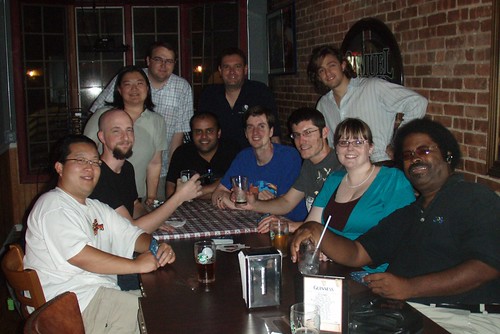There is a Linked In group I created some time ago but forgot to advertise that is for MySQL Speakers and Presenters.
If you a speaker or presenter of MySQL content, confirm your registration here.
You will need to have a reference to a website confirming you have been a speaker at a MySQL Event such as a User Conference, MySQL Camp or Local MySQL Users Group.
Hopefully overtime we can build a consolidated index at MySQL Forge Presently some pages exist including MySQL Conference & Expo and User Group Presentations but I’m accepting input for a model to have a central page, and link to or upload of presentation. Any input welcome.



 The
The 










